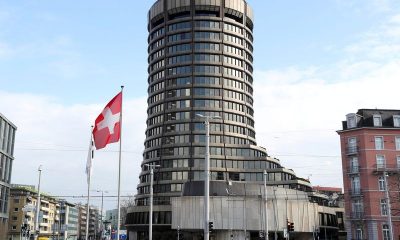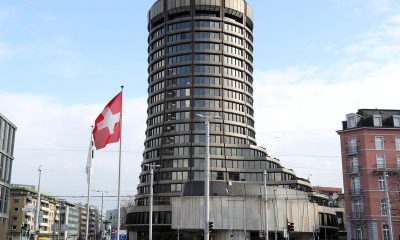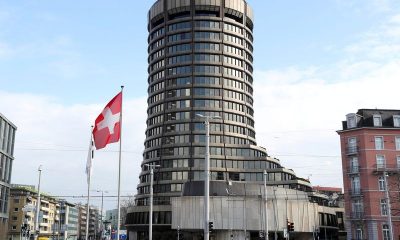Economy
S&P 500 edges up after mixed jobs data
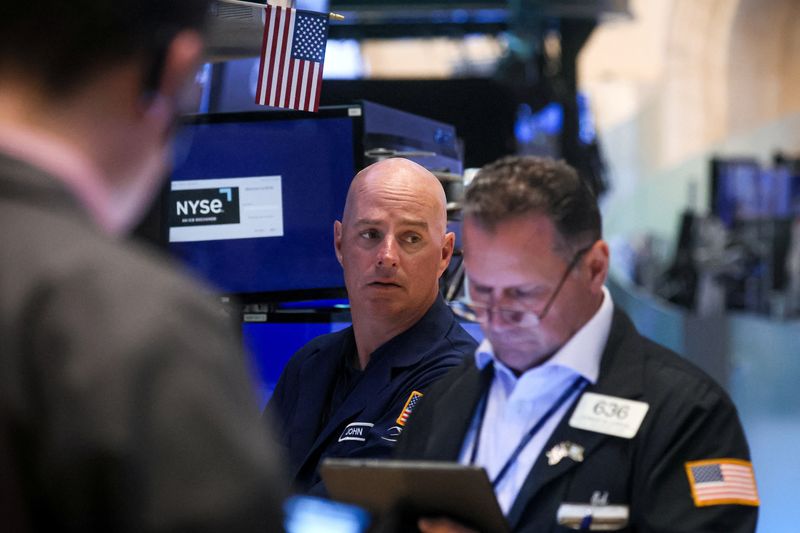
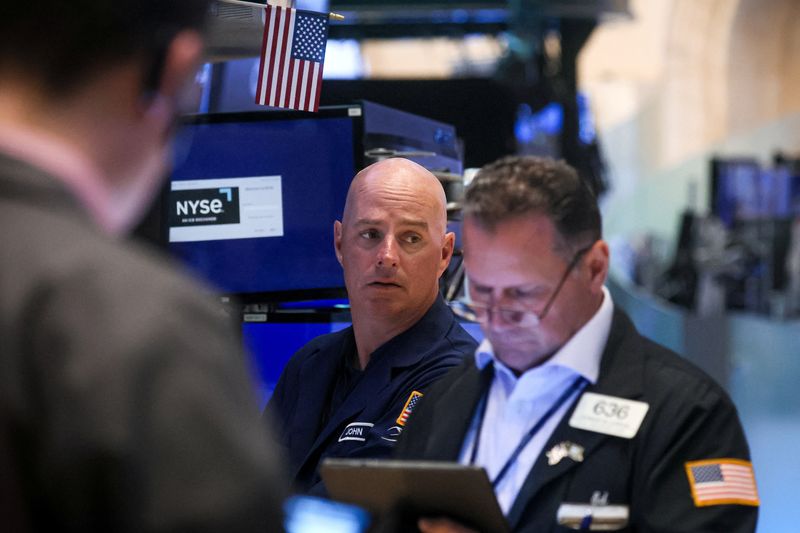
© Reuters. Traders work on the floor of the New York Stock Exchange (NYSE) in New York City, U.S., July 6, 2023. REUTERS/Brendan McDermid
By Bansari Mayur Kamdar and Johann M Cherian
(Reuters) – The benchmark inched higher on Friday in choppy trading after a mixed employment report signaled resilience in the labor market in the face of the Federal Reserve’s aggressive monetary tightening.
The data showed that while U.S. job growth slowed more than expected in June after surging in the previous month, labor market conditions remained tight, with the unemployment rate retreating from a seven-month high and strong wage gains continuing.
“It’s a really unusual time… we’re getting news out that the economy is doing pretty good with employment being viewed as a tailwind for growth,” said Steve Wyett, chief investment strategist at BOK Financial.
“But at the same time, it just puts the Fed in a position where they’ve got more work to do.”
Traders stuck to bets the Fed will raise its benchmark interest rate this month to a 5.25%-5.5% range, but likely expect no more hikes beyond that.
They now see about a 34% chance of a further rate hike in November, down from nearly even odds before the report, according to CME’s Fedwatch tool.
Chicago Fed President Austan Goolsbee said he did not disagree with the consensus among central bank policymakers that rates will need to rise a couple more times this year.
Wall Street’s main indexes ended sharply lower in a broad selloff in the previous session, with the benchmark S&P 500 posting its biggest daily percentage drop in six weeks, after employment data on Thursday showed the number of jobs more than doubled in June.
At 12:05 p.m. ET, the was down 26.20 points, or 0.08%, at 33,896.06, the S&P 500 was up 9.12 points, or 0.21%, at 4,420.71, and the was up 67.31 points, or 0.49%, at 13,746.36. The index, that houses small-cap names, added 1.5%, outpacing peers.
Six of the 11 major S&P 500 sectors advanced in mid-day trading, with commodity stocks such as energy and materials up over 1% each and outperforming the broader market.
All three major U.S. stock indexes were on track to end the week lower as escalating tensions between Beijing and Washington also weighed on market sentiment.
Among other movers, the S&P 500 banking index gained 1.4%. All major banks, including JPMorgan Chase (NYSE:), Citigroup (NYSE:) and Wells Fargo (NYSE:), ticked higher ahead of reporting second-quarter earnings next week.
Tesla (NASDAQ:) rose 1.0% after it said it would offer new buyers of its top-selling electric vehicles in China a cash bonus equivalent to almost $500 if they have a referral from an existing owner.
Levi Strauss & Co (NYSE:) tumbled 7.2% as the denim clothing maker cut its annual profit forecast on Thursday.
U.S.-listed shares of Alibaba (NYSE:) gained 7.9% after Chinese authorities said they will impose a $984 million fine on Ant Group, ending the affiliate fintech company’s years-long regulatory overhaul.
Advancing issues outnumbered decliners by a 3.45-to-1 ratio on the NYSE and a 2.41-to-1 ratio on the Nasdaq.
The S&P index recorded three new 52-week highs and four new lows, while the Nasdaq recorded 28 new highs and 49 new lows.
Economy
Russian central bank says it needs months to make sure CPI falling before rate cuts -RBC


© Reuters. Russian Central Bank Governor Elvira Nabiullina attends a news conference in Moscow, Russia June 14, 2019. REUTERS/Shamil Zhumatov/File Photo
MOSCOW (Reuters) – Russia’s central bank will need two to three months to make sure that inflation is steadily declining before taking any decision on interest rate cuts, the bank’s governor Elvira Nabiullina told RBC media on Sunday.
The central bank raised its key interest rate by 100 basis points to 16% earlier in December, hiking for the fifth consecutive meeting in response to stubborn inflation, and suggested that its tightening cycle was nearly over.
Nabiullina said it was not yet clear when exactly the regulator would start cutting rates, however.
“We really need to make sure that inflation is steadily decreasing, that these are not one-off factors that can affect the rate of price growth in a particular month,” she said.
Nabiullina said the bank was taking into account a wide range of indicators but primarily those that “characterize the stability of inflation”.
“This will take two or three months or more – it depends on how much the wide range of indicators that characterize sustainable inflation declines,” she said.
The bank will next convene to set its benchmark rate on Feb. 16.
The governor also said the bank should have started monetary policy tightening earlier than in July, when it embarked on the rate-hiking cycle.
Economy
China identifies second set of projects in $140 billion spending plan


© Reuters. FILE PHOTO: Workers walk past an under-construction area with completed office towers in the background, in Shenzhen’s Qianhai new district, Guangdong province, China August 25, 2023. REUTERS/David Kirton/File Photo
SHANGHAI (Reuters) – China’s top planning body said on Saturday it had identified a second batch of public investment projects, including flood control and disaster relief programmes, under a bond issuance and investment plan announced in October to boost the economy.
With the latest tranche, China has now earmarked more than 800 billion yuan of its 1 trillion yuan ($140 billion) in additional government bond issuance in the fourth quarter, as it focuses on fiscal steps to shore up the flagging economy.
The National Development and Reform Commission (NDRC) said in a statement on Saturday it had identified 9,600 projects with planned investment of more than 560 billion yuan.
China’s economy, the world’s second largest, is struggling to regain its footing post-COVID-19 as policymakers grapple with tepid consumer demand, weak exports, falling foreign investment and a deepening real estate crisis.
The 1 trillion yuan in additional bond issuance will widen China’s 2023 budget deficit ratio to around 3.8 percent from 3 percent, the state-run Xinhua news agency has said.
“Construction of the projects will improve China’s flood control system, emergency response mechanism and disaster relief capabilities, and better protect people’s lives and property, so it is very significant,” the NDRC said.
The agency said it will coordinate with other government bodies to make sure that funds are allocated speedily for investment and that high standards of quality are maintained in project construction.
($1 = 7.1315 renminbi)
Economy
Russian central bank says it needs months to make sure CPI falling before rate cuts -RBC


© Reuters. Russian Central Bank Governor Elvira Nabiullina attends a news conference in Moscow, Russia June 14, 2019. REUTERS/Shamil Zhumatov/File Photo
MOSCOW (Reuters) – Russia’s central bank will need two to three months to make sure that inflation is steadily declining before taking any decision on interest rate cuts, the bank’s governor Elvira Nabiullina told RBC media on Sunday.
The central bank raised its key interest rate by 100 basis points to 16% earlier in December, hiking for the fifth consecutive meeting in response to stubborn inflation, and suggested that its tightening cycle was nearly over.
Nabiullina said it was not yet clear when exactly the regulator would start cutting rates, however.
“We really need to make sure that inflation is steadily decreasing, that these are not one-off factors that can affect the rate of price growth in a particular month,” she said.
Nabiullina said the bank was taking into account a wide range of indicators but primarily those that “characterize the stability of inflation”.
“This will take two or three months or more – it depends on how much the wide range of indicators that characterize sustainable inflation declines,” she said.
The bank will next convene to set its benchmark rate on Feb. 16.
The governor also said the bank should have started monetary policy tightening earlier than in July, when it embarked on the rate-hiking cycle.

 Forex3 years ago
Forex3 years agoForex Today: the dollar is gaining strength amid gloomy sentiment at the start of the Fed’s week

 Forex3 years ago
Forex3 years agoUnbiased review of Pocket Option broker

 Forex3 years ago
Forex3 years agoDollar to pound sterling exchange rate today: Pound plummeted to its lowest since 1985

 Forex3 years ago
Forex3 years agoHow is the Australian dollar doing today?

 Cryptocurrency3 years ago
Cryptocurrency3 years agoWhat happened in the crypto market – current events today

 World3 years ago
World3 years agoWhy are modern video games an art form?

 Commodities3 years ago
Commodities3 years agoCopper continues to fall in price on expectations of lower demand in China

 Economy3 years ago
Economy3 years agoCrude oil tankers double in price due to EU anti-Russian sanctions

